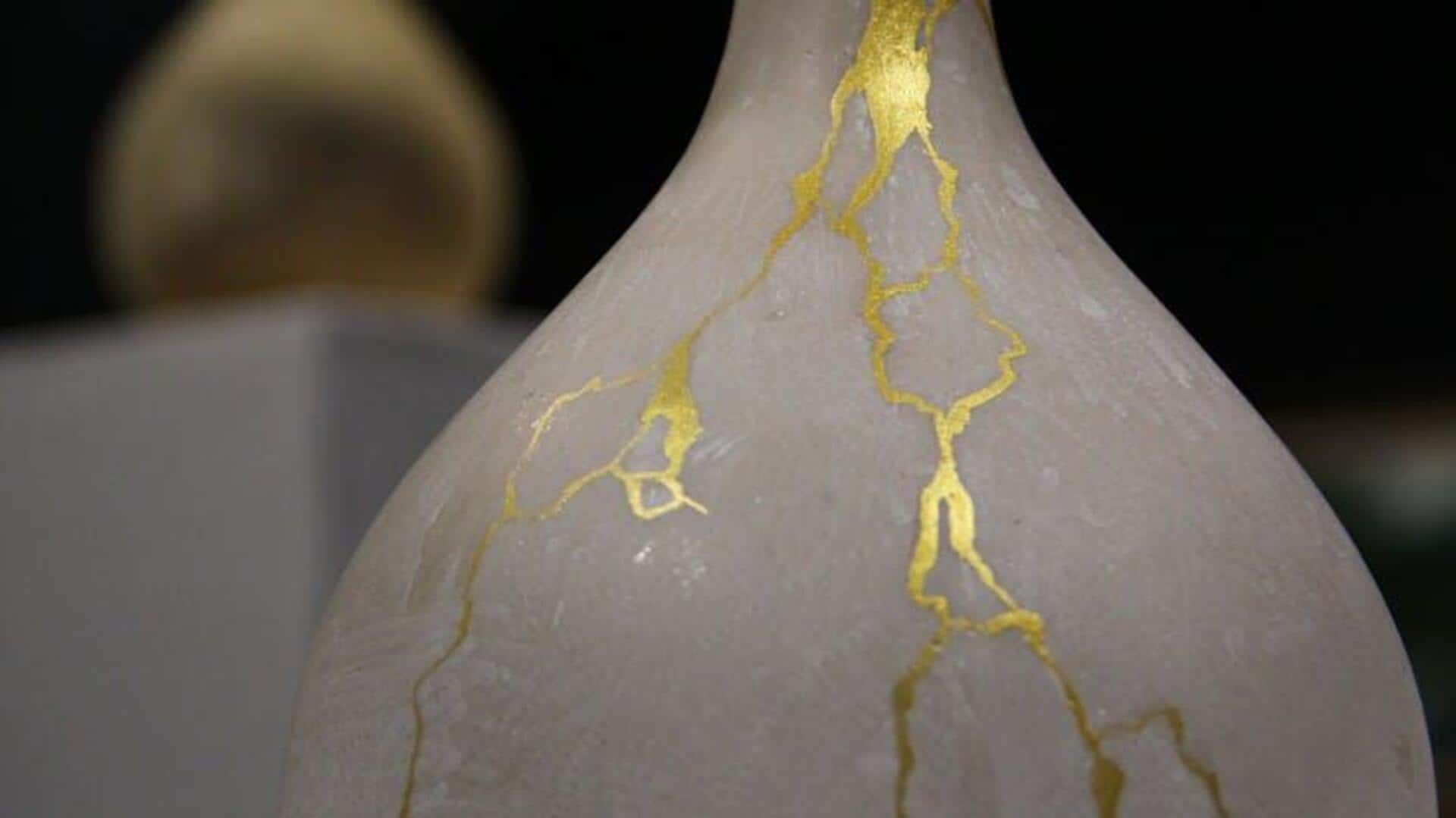
Exploring Japanese kintsugi: Embracing imperfection in art
What's the story
Kintsugi is a traditional Japanese art form of repairing broken pottery with lacquer mixed with powdered gold, silver, or platinum. The technique not only restores the item but also highlights its fractures, embracing the beauty of imperfection. Dating back to the 15th century, kintsugi embodies a philosophy that celebrates resilience and history over flawlessness. It encourages appreciation for objects' unique stories and imperfections rather than discarding them.
#1
The philosophy behind kintsugi
Deeply rooted in the Japanese philosophy of wabi-sabi, which finds beauty in imperfection and transience, kintsugi is a stark contrast from Western ideals of perfection and newness. By emphasizing flaws as part of an object's history, kintsugi teaches acceptance and appreciation for life's imperfections. It tells us that breakage and repair are integral to an object's life story, not something to hide.
#2
Techniques used in kintsugi
The process of kintsugi involves a few steps: collecting the broken pieces, preparing lacquer mixed with precious metals, and carefully reassembling the object. Each step requires an abundance of patience and precision to ensure the object is durable while highlighting the cracks artistically. The use of gold or silver not only strengthens but also beautifies the repaired item, making it more valuable than it was before it was broken.
#3
Cultural significance of kintsugi
Kintsugi also has deep cultural significance in Japan as it represents resilience and transformation through adversity. It is commonly viewed as a metaphor for personal growth following hardship or loss. By celebrating imperfections instead of hiding them, this art encourages people to embrace their own scars as part of their own unique journey.
Tip 1
Modern applications of kintsugi
Today, kintsugi has gone beyond its traditional roots to impact modern design aesthetics worldwide. Artists weave its principles into ceramics, textiles, even digital art forms. Photography or graphic design projects inspired by its themes have sprung up across the world. This stems from an increasing interest among contemporary creators. They look for meaningful connections between past traditions and present innovations, without losing sight of the core values inherent within the practice itself.